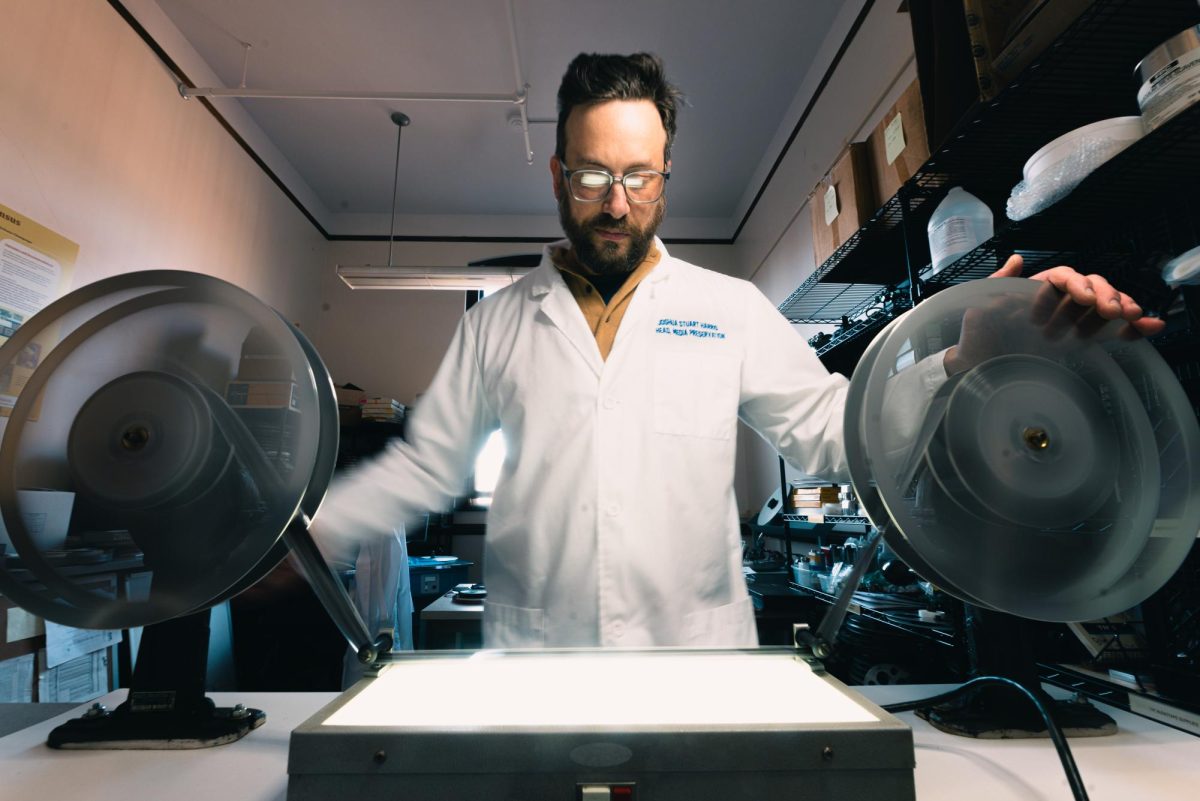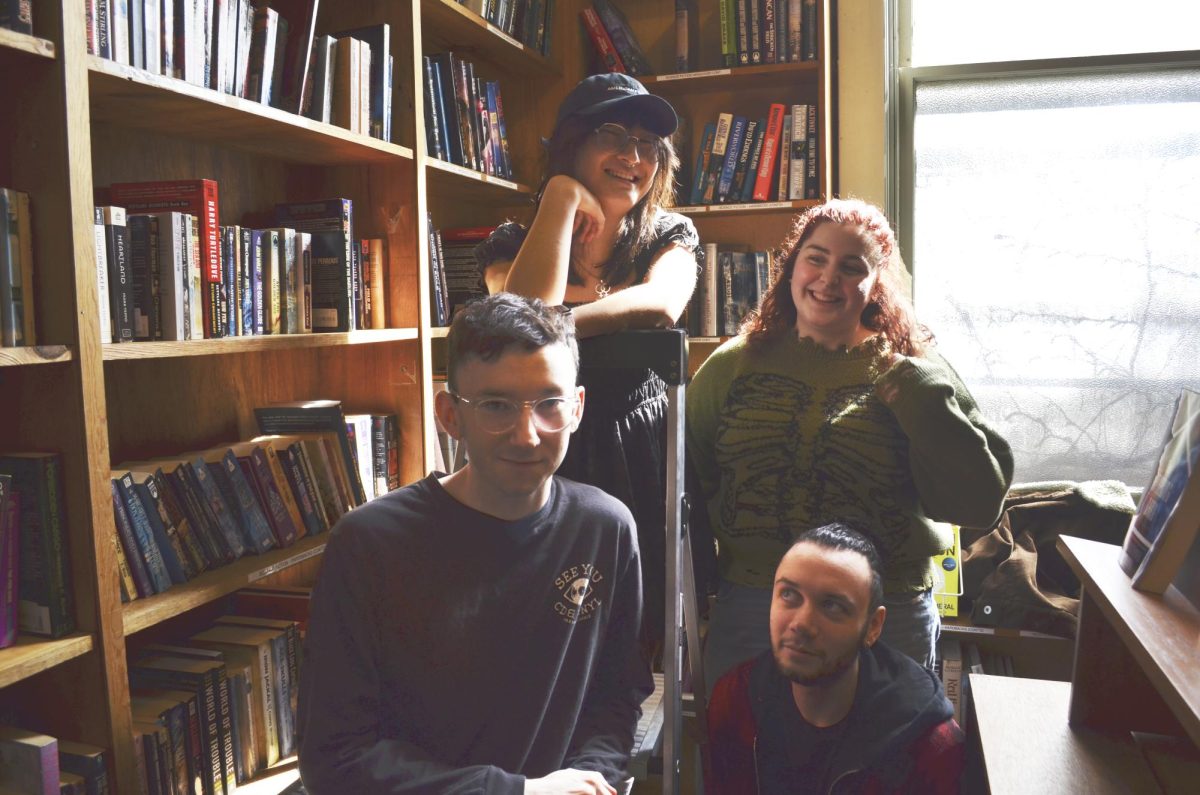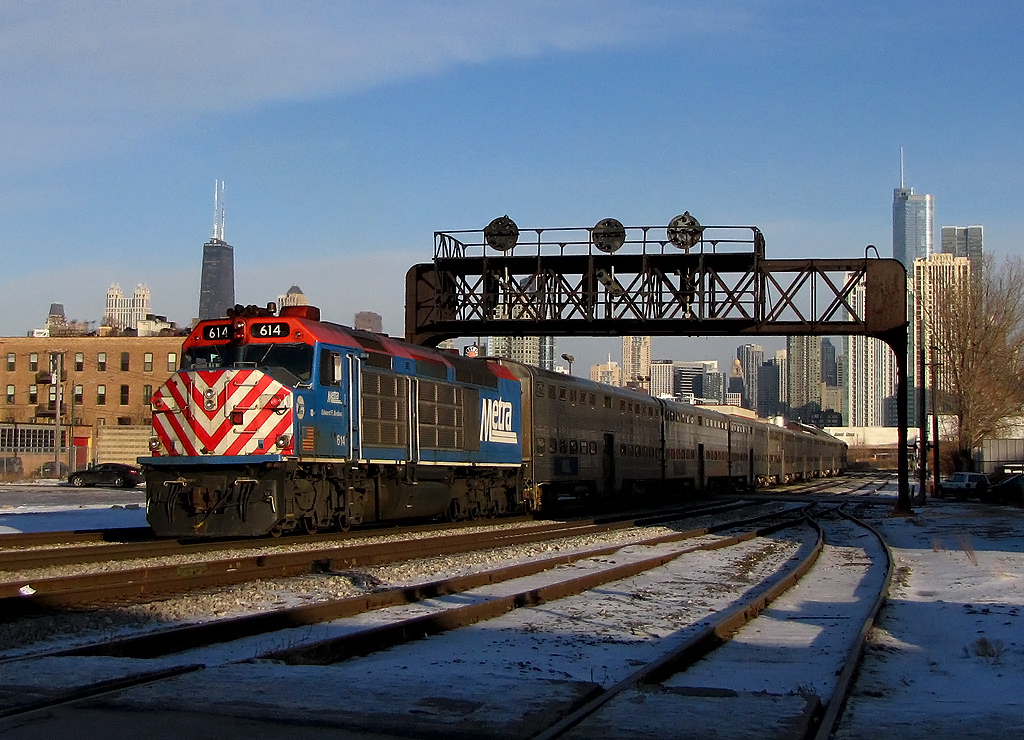Last updated on Oct. 8, 2025 at 10:11 p.m.
Fourteen years ago, a box of film collecting dust was discovered in the basement of the University’s Main Library.
Upon opening the box, Zachary Boerger, graduate student in Information Sciences, did not expect its contents to be the first publicly demonstrated sound on film by Joseph Tykociner, the University’s first electrical engineering professor.
Joshua Harris, media preservation coordinator at the Main Library, began working at the University in 2011 to formalize the media preservation program. He conducted the Illinois Campus Media Census to determine the amount of film material on campus.
“I did the census to find out how much of this film is around campus, how much of these videotapes are in the library,” Harris said. “What machines should I get for all this stuff?”
Get The Daily Illini in your inbox!
At the time, the archives were filled with films and tapes in basements and attics of different buildings, many of which were degrading. Harris and Boerger found over 400,000 items, including Tykociners.
Although Tykociner is a crucial figure in film history, he is regarded as a lost figure in motion picture technology. Despite Tykociner’s feats, he was unable to gain commercial success. Because of a patent dispute with the University, he couldn’t market his invention.
“Just because you get to something first doesn’t mean that it works to the needs of industries and consumers, and it doesn’t mean that it will be successful in the long-term,” said Derek Long, associate professor in Media.
While the film industry is based on entertainment, Long notes that Tykociner was a scientist who showcased experimental technology with his film.
“He (was) trying to figure out how you do this from an engineering standpoint, and from that standpoint, it’s an incredible success,” Long said.
Although this was an exciting discovery, Boerger noticed the films were made of cellulose nitrate — a flammable, degradable material — which could damage the film permanently.
“We decided there on the spot we needed to do something,” Harris said. “They need to be cleaned; they need to be rehoused. They need to be taken care of so that they will survive.”
As Harris and his graduate student researched Tykociner, they realized they weren’t the only ones who had tried to restore work. In the ’50s, the Motion Picture Association attempted to repair Tykociner’s film and audio but were unsuccessful.
“They couldn’t figure out the speed problem,” Harris said. “It was really bad quality. You could barely hear anything. So they just kind of gave it up.”
To fund the project, Harris applied for a grant from the National Film Preservation Foundation to not only preserve the original nitrate film strip but also figure out how to properly decode the audio track.
One of the ways to restore Tykociner’s film was to replicate it on film print. However, because the Media Preservation Department was still in its infancy, there weren’t labs set up to achieve this. Harris knew they would need to use outside labs to continue the film’s restoration process.
He traveled to New York to collaborate with Cineric Inc., a major film restoration lab, where he met with Simon Lund, the director of technical operations at the time.
“He was the wizard who was able to come up with a software solution that was able to read the soundtrack and also adjust the speeds, then he perfected it over the next several months,” Harris said.
Because the film was damaged, Lund also ran it into a wet gate, where it was submerged into a liquid that filled in its scratches and blemishes to scan and digitize the strip.
“I can say with pretty good confidence that we were the first ones to hear (the film) since Tykociner had originally shown it 100 years ago because nobody else has ever been able to play it back properly,” Harris said.
While the restoration process of Tykociner’s work was in motion, Harris had also received funds to document this journey and potentially create a documentary.
With the help of Jake Metz, assistant director of infrastructure at IMMERSE, and Eric Kurt, media commons coordinator, they were able to record footage and take photographs of the process.
“I was engaged because I find this sort of thing fascinating,” Metz said. “I have a background in electrical engineering, and so I’m very fascinated by different pieces of technology and the way that we have captured and reproduced audio and video.”
They interviewed film historians and preservation experts, some of whom had never heard about Tykociner’s significance in film history. A teaser trailer of the documentary was also created.
Although there was plenty of footage on Harris and Metz’s hard drives, the documentary fell through due to the lack of funds. Although the project hasn’t been completed, Harris hopes this journey in uncovering Tykociner’s film sees the light of day.
“I’ve always thought that someday, after my career, the whole Tykociner story could definitely be a book, at minimum, of some sort,” Harris said. “But I think a documentary would really be the best way to show it because it’s such an audio-visual thing.”
Although the documentary’s future is uncertain, Harris presented Tykociner’s restored film to a crowded room at the Academy of Motion Picture Arts and Sciences in Los Angeles.
“It was an unbelievable experience getting the accolades and recognition for doing this project,” Harris said.
Harris always tells his students that despite the amount of excruciating labor it takes to decode and preserve media, in the end, it’s worth it.
“What we do here in preservation is just trying to save this stuff so that the University, the researchers, the people that investigate the past, will have access to these materials,” Harris said. “Every one film we save, or every one tape, is one more that would have been lost to history.”








